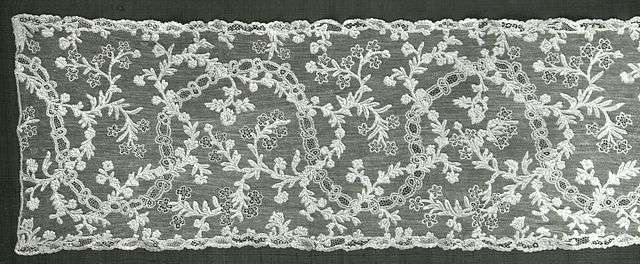Craftsmanship of Alençon needle lace-making
Alençon needle lace is a beautiful style of Lace that was created only in Northern France. This one-of-a-kind lace was meticulously created entirely by hand. Eventually, textile makers discovered a technique to replicate the appearance of this fine Lace by employing automated machinery. This has resulted in it becoming a popular option among brides.

Introduction – What is the Alencon lace-making craftsmanship?
Lace is an openwork textile that is created from one or more threads. It is different from embroidery, which is the decoration of a pre-existing material. Worldwide, there are two types of handmade lace: bobbin lace and needle lace. The first is the most widespread and is mostly made in Europe, in particular in several regions of France. Such as Auvergne, Normandy, Lorraine and Flandres. The second form, needle lace, is rare. And the lace that has been developed in the Alençon region is its quintessential variety. There are only ten or so specialists in the unique craftsmanship of Alençon lace in the world. And most of them work for the National Alençon Lace Workshop.
The Alençon technique, known as the point d’Alençon method, it is an extremely uncommon type of needle lacing that was once only used in the town of Alençon. Located in the French region of Normandy, in the north-western part of the country. Alençon needle lace is unique in that it requires a high degree of artistry. And is produced over a lengthy period, making it difficult to find (seven hours per square centimeter). Textile items made using the method are utilized for ornamental purposes in both civic and religious settings. The sculpture is composed of design components that are kept together by a net that has been meticulously sewn.
Alençon

Its production process is divided into several stages: the drawing and pricking of the design on parchment, the creation of the design’s outline and the background netting, the traditional stitching of the patterns, shading with filling stitches, decorating with designs, and embroidering to create relief. A lobster claw polishes the filler stitches after being cut from the parchment with a razor blade. After that, the Lace is trimmed and polished again. Each lace-maker in Alençon understands how to finish each stage of the process. Information that can only be passed on by hands-on experience in the field. A mastery of Alençon needle lace-making techniques. A strong relationship between the lace-maker and the apprentice is essential to the learning process, completely based on oral transmission and hands-on experience with the lace-making technique.
Alençon’s lace illustrious past
As “the Queen of Laces and a Lace Fit for Queens”, Alençon lace is the most intricate needle-point Lace ever created in France. It had its roots in 1665 when Louis XIV decided to increase the quality of French Lace. To retain the large sums being spent on Italian and Flemish laces by members of his court in the nation where they belonged.
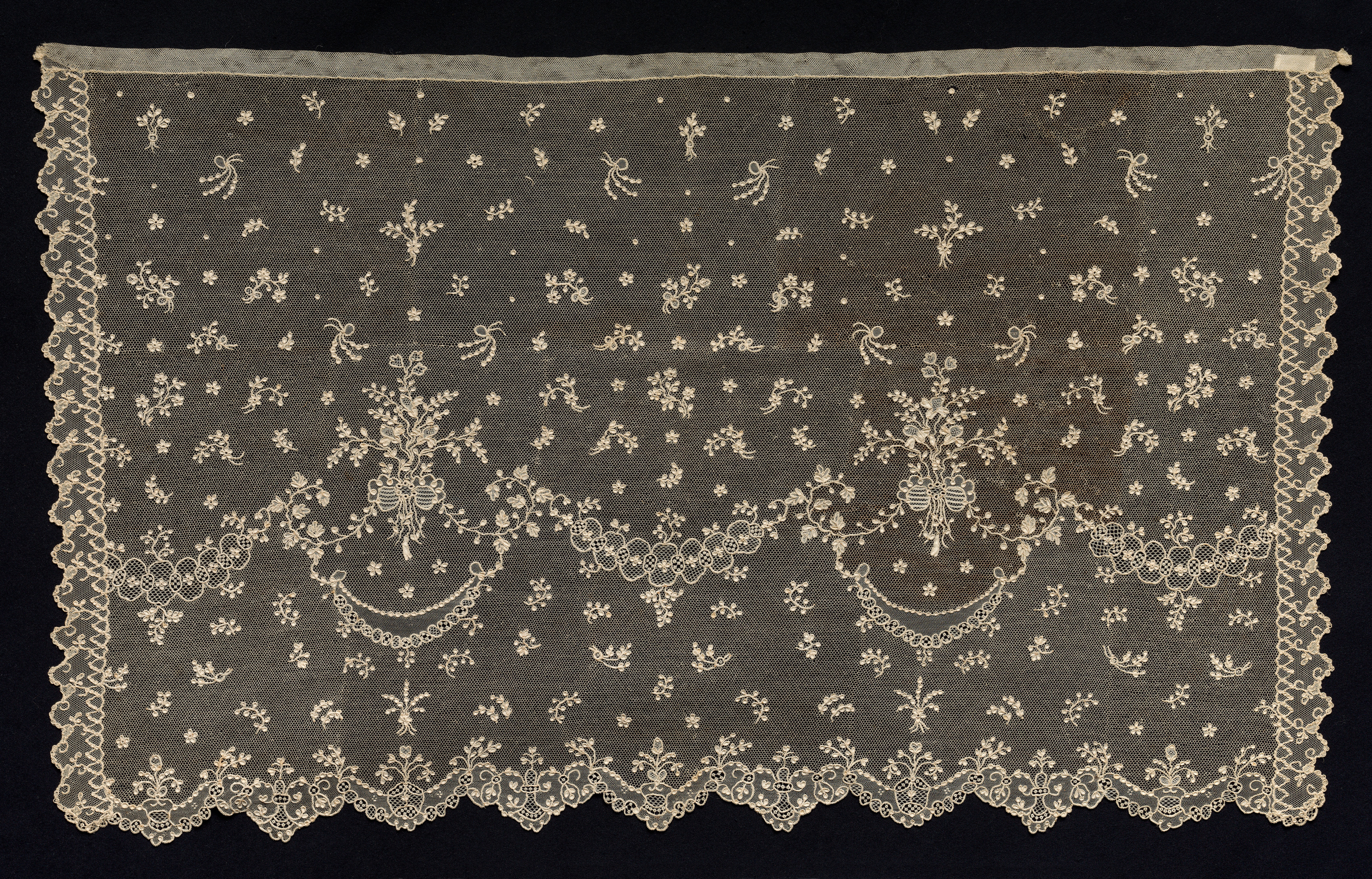
French lace-makers at Alençon, Normandy, who were already experienced in cutting-thread Lace, were taught by Venetian lace-makers who were brought in from the Veneto. The number of employees increased swiftly. According to official figures, by 1875, about eight thousand people were employed in lace manufacturing in Alençon and its neighboring towns. Like Sees, Argentan, Falaise, Mamers, and Beaumont. Until around 1675, the new French Lace had a significant resemblance to Spanish and Venetian points. However, during this time, the lace-makers of Alençon adopted a mesh backing method. They devised a new and even more delicate stitch, resulting in a particular design that earned them the nickname “Point d’Alençon.”
Alençon lace was sold at exorbitant prices, and it was only available to the nobility who could afford it. Not only were pieces of clothing trimmed with it. But it was also employed as a trim for sumptuous bedclothes, upholstery, valances, and bedspreads, to name a few things. In the churches, it was used to hang altars and trim priestly surplices. And the monarch used it to give out cravats, ruffles, and full articles of clothing to members of his royal court.
Exclusivity at an high price
During the French Revolution, in 1794, the value of Alençon lace reached an incredible 12,000,000 livres (pounds) an annum. Which was a staggering amount at the time. Considering that the average day’s income at the time was just three sous (shillings), the Lace’s worth was equivalent to around 80 million hours of work.
As a result of their connections to the nobility, a large number of Alençon lace industry workers were either slain or forced to flee France during the Revolution. Nonetheless, the art persisted and even saw a resurgence when Emperor Napoleon I presented Marie Louise with bed linens adorned with the best Alençon lace on the occasion of their marriage.

The Duchess of Angoulême attempted to revitalize the industry. But by 1830, there were only two or three hundred Alençon lace-workers left in the city’s workforce. Alençon lace was on display at the Great Exhibition of 1851 in London’s Crystal Palace, which was well acclaimed. A huge commission was placed in 1856 to commemorate the birth of Prince Imperial in Alençon. On display at Alençon in 1859 was the dress worth 200,000 francs. Acquired by Emperor Napoleon III for the Empress of France. It was the most expensive single piece ever done at the museum at the time. However, the Alençon lace business suffered a fatal decline towards the end of the nineteenth century. As cheaper machine-made Lace became accessible and fashion trends shifted away from the traditional style.
“Technique de la dentelle” d’Alençon
Apprenticeship in the Alençon lace method takes four years, and it takes another four years to perfect the skill entirely. The process of manufacture is incredibly labour-intensive. With one square centimetre of Lace requiring seven hours to create. Although it enables the creation of exceedingly delicate and complicated designs.
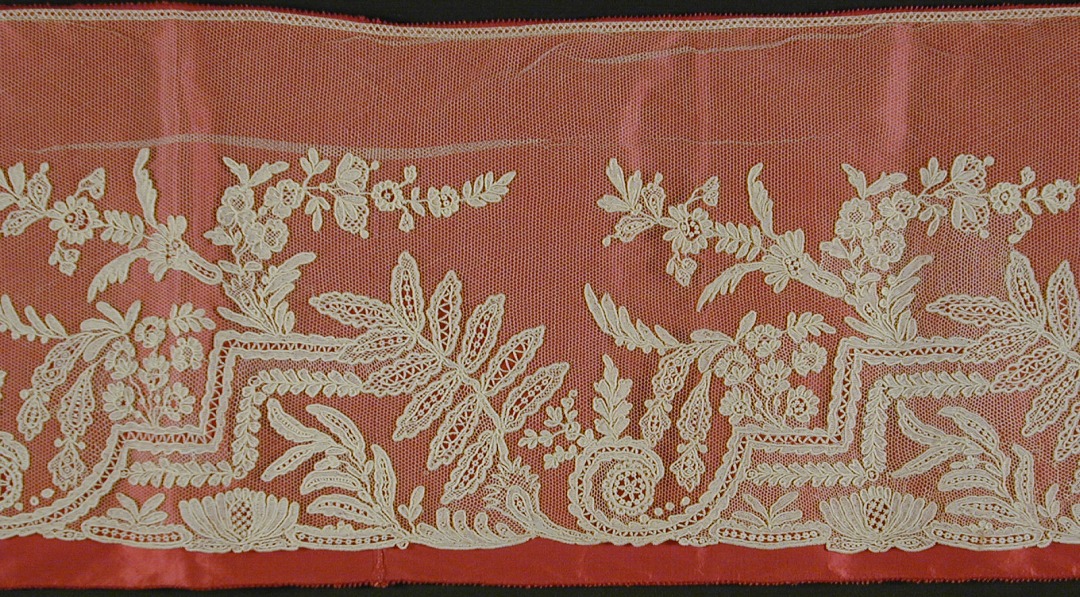
As a luxury item available only to the wealthy – the royal court and aristocracy – Alençon lace production declined following the French Revolution. But experienced several periods of a resurgence in the nineteenth century before succumbing to changing fashion. And also the introduction of low-cost machine-made Lace in the twentieth century.
The National Alençon Lace Workshop was formed in 1976 to preserve the Alençon lace-making process for future generations. In 2010, UNESCO included the high quality and expertise of Alençon lace on the “Representative List of the Intangible Cultural Heritage of Humanity“. “Alençon needle lace is remarkable due to the high degree of artistry required and the extremely long time it takes to manufacture (seven hours per square cm),” the UNESCO committee stated in its announcement.

Lace is included in a permanent display at the Musée de la Dentelle, located in the heart of Alençon. The National Lace Workshops, located in an adjacent building. Samples of Alençon lace are available for purchase at the museum store. But you’ll need to have significant funds to afford them.
Detailing the art of Alençon needle lace-making: the stages of the production process
Alencon Lace is made of ten stages.
1. “Le dessin,” which is French for “tracing.”
Initial sketches in ink are followed by transferring the design outline onto translucent paper.
2. “Le Piquage,” often known as pin-pricking
This is then transferred onto green parchment or vellum (green being less taxing on the eyes). By piercing the design outline through the translucent paper and the parchment with a “piquoir”, or a steel needle attached on a handle. For the time being, the parchment and tracing paper are both secured firmly in place on a cushioned surface.
3. “La trace,” also known as the foundation thread
The parchment is laid over a double layer of fabric to protect it from damage. Lace-makers lay a foundation thread around the design with a double thread; the double thread follows the outline of the pattern and is secured by a third thread that passes through the perforations.
This is the sole phase in which a needle and thread are used to puncture the parchment. All additional stitches are done across the surface of the parchment and are attached to the foundation thread with the foundation thread. To cut the anchor threads, the second layer of fabric is placed beneath the parchment (step 9). So that the razor may slide between the layers of cloth without damaging the real lacework.
4. “Le réseau,” which is French for “the background”
The backdrop is made up of empty spaces that are not part of the basic design elements. Which are filled in in the next step. The backdrop (also known as the net ground) is made out of an open mesh. As a result, from left to right and bottom to top, a row of double loops is created between the anchor threads, ensuring that the surface of the parchment support is not pierced during the process. The row of loops is strengthened by wrapping the thread three times around the top or ‘dome’ of each loop, working backward from right to left once the row has reached its conclusion. The process is repeated until all background areas have been filled.
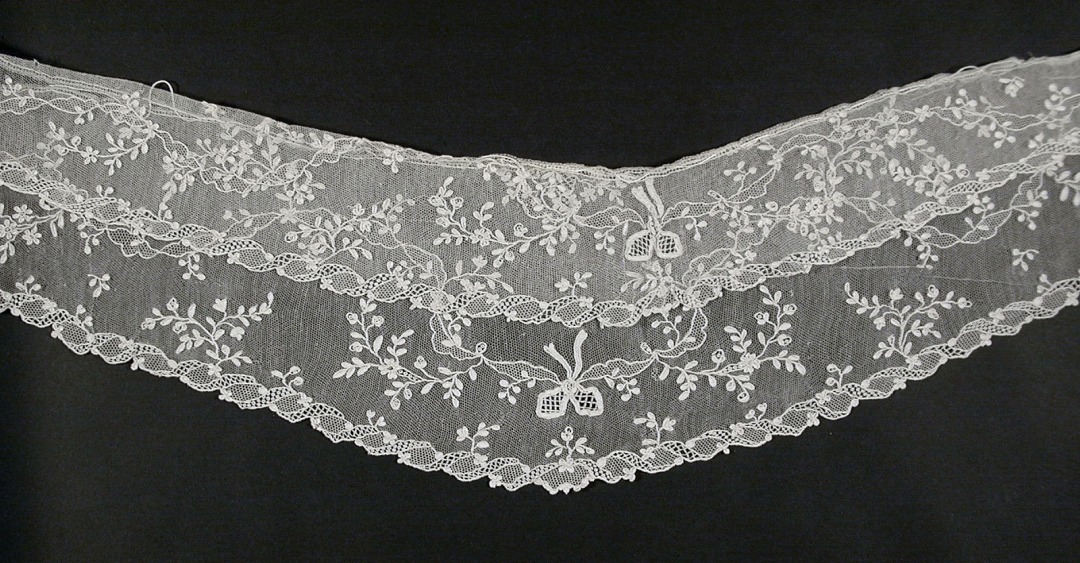
5. “Les remplis,” or filling stitches, is a kind of stitch.
As with the background, loop stitches are used to fill in the design motifs. Which are first worked from left to right and then reinforced on the return from right to left. However, the filling is worked more tightly than the background. These are used to fill in the opaque portions of the pattern proper. Such as flowers, leaves, and other such features; five different types of loop stitch are employed to create differences in light and shade in the completed design.
6. “Les modes” (highlights) or “Les modes”
The modes are distinctive to Alencon lace, and there are a plethora of various designs that may be employed to create them. Overall, they are produced by buttonhole stitches (blanket stitches) that are ornamented with scallop stitches or have picot edges. During the sewing process, they are sewed over horsehair (particularly a forelock hair) that is progressively slipped out as the operation advances. There are around twenty different modes that may be utilized, including jagged designs, scallop stitches bordered with picots, picot-edged ovals, chains of small Xs, and so on.
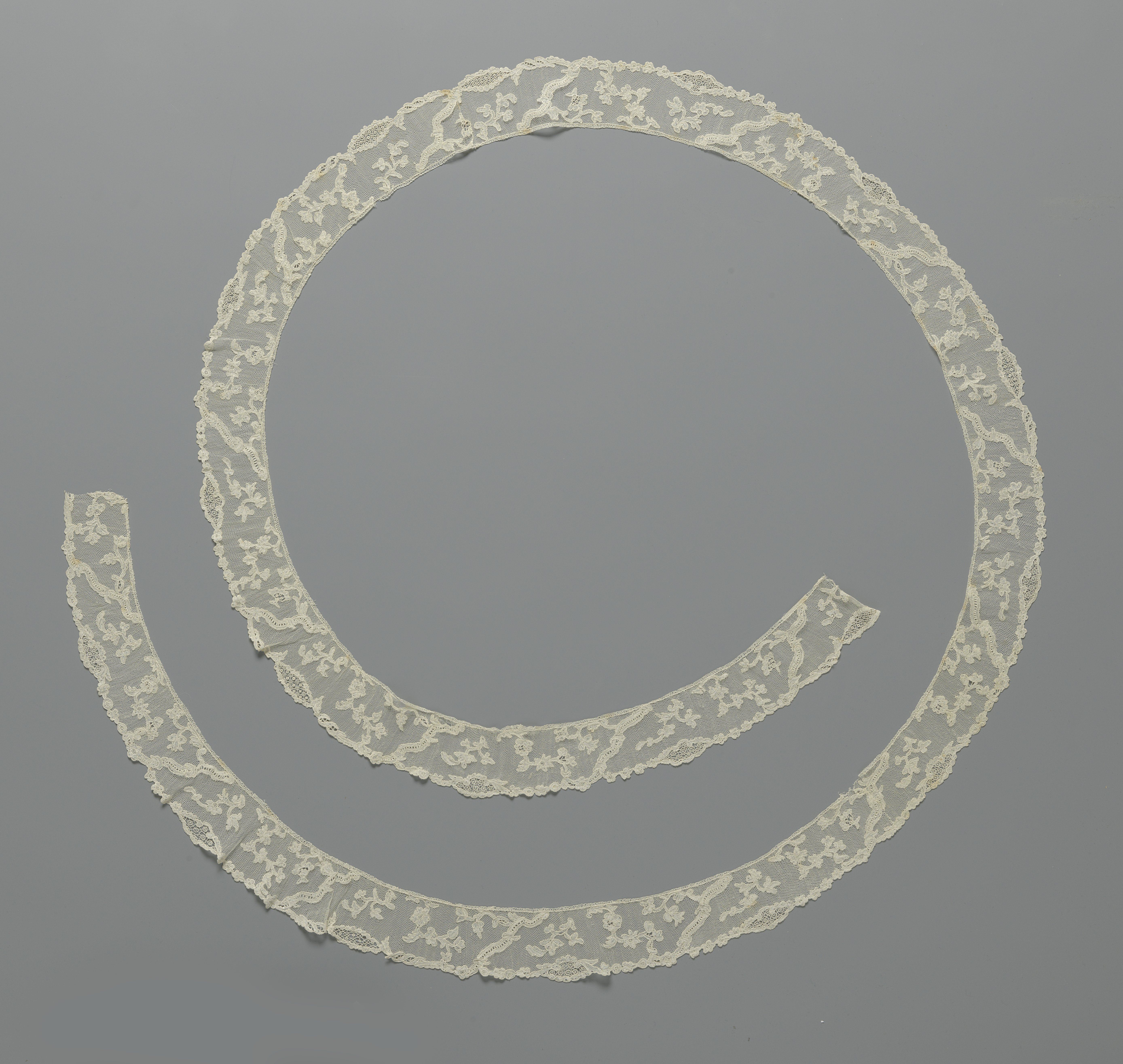
7. “La Brode,” which is French for “relief”
The pattern motifs and the outer edge of the Lace are delineated by a very fine relief work known as ‘brode’ or relief embroidery. Which is a type of relief needlework that is exceedingly fine. In order to harden and give further outlining relief, scallop-stitching is used in conjunction with a supplemental thread to make the outline of the motifs. In turn, picots are used to embellish the scallop stitching around the Lace’s outside edge.
8. “Le Levage” or “l’Enlevage,” which translates as “the lifting off”
In order to remove the final piece of Lace from the parchment, it is necessary to slide a razor between the two layers of fabric and cut the foundation holding threads. After that, the paper can be carefully peeled away from the backing cloths, and the Lace may be gently pushed away from the parchment.

9. “L’Emboutage,” which translates as “picking off”
With the use of eyebrow tweezers, the lace-maker removes all of the leftover clipped ends of threads.
10. “Le Luchage,” which translates as “polishing.”
During the last stage, which is called “cold ironing,” the lace-maker uses a lobster claw to polish the filling stitches (“le Rempli,” stage 5) to enhance the relief. Previously, the same procedure was carried out with the aid of a wolf’s fang.
A finished part of Lace can be joined to additional sections to form a bigger piece. Such as a flounce or a collar, by sewing them together. When it comes to invisibility, the lace-maker must be well-versed in all aspects of the lace-making process. These steps are now taught to all lace-makers, although when Alencon lace was created in vast quantities from the 17th to nineteenth centuries, most lace-makers focused on one particular process and split the labour according to that specialization. Only the person who completed the final assembly was aware of all of the processes.

Transmission of Alençon’s lace technique from generation to generation
Alençon needle lace is unique in that it requires a high level of artistry and is produced over a long period of time, which makes it difficult to find (seven hours per square centimeter). Textile pieces made using the technique are used for decorative purposes in both civic and religious settings.

The sculpture is composed of design components that are held together by a net that has been meticulously stitched. Its production process is divided into several stages: the drawing and pricking of the design on parchment, the creation of the design’s outline and the background netting, the traditional stitching of the patterns, shading with filling stitches, decorating with designs, and embroidering to create relief. A lobster claw polishes the filler stitches after they have been cut from the parchment with a razor blade. After that, the lace is trimmed and polished again. Each lace-maker in Alençon understands how to complete each stage of the process — knowledge that can only be passed on by hands-on experience in the field. It takes seven to 10 years of training to become a master in Alençon needle lace-making techniques.
Because of the relation established between the specialized lace-maker and the apprentice, the learning process is entirely dependent on oral transmission and hands-on experience.
Local importance of Alençon’s Needle Lace
Lace made in Alençon is a beautiful style of lace that was originally created only in Northern France. This one-of-a-kind lace was painstakingly created entirely by hand. The production of Alençon was considered a luxury due to the time and expense involved in its production. It was also highly sought after by members of the royal family and the higher classes. Marie-Antoinette, the Queen of France, wore Alençon as part of her royal attire.
France has always regarded Alençon needle lace-making as a leisure pastime, with many couviges, or small social gatherings, dedicated to the art of Alençon needle lace-making. Since the end of World War II, the increased pace of modern life, the expansion of women’s professional opportunities, and the decreasing usage of lace in fashion have all led to its extinction as a recreational activity and a profession, respectively.

The Alencon (re-embroidered chantilly) lace design is a lovely yet timeless design that is typically found on luxury designer bridal gowns. Alencon needle lace is delicate, but it is also strong enough to resist beading and shaping without breaking down. Additionally, it features a double-scallop border/edge, and the patterns can be cut out and used as appliques on the garment.
Alencon needle lace is added to the design to give it a three-dimensional appearance. This is also referred to as needle lace. On average, it takes 4-6 months to complete the process from the first day on the loom to the finished.
Cultural variety should be respected
Lace-making, and textile arts in general, are characterized by a certain level of craftsmanship.
Alençon needle lace, in its current form, is the culmination of years of experience collected by generations of lace-makers. As well as a tradition of workmanship that has been passed down from generation to generation. Because of the strong relationship that exists between the master lace-maker and the student, the learning process is entirely dependent on oral transmission and hands-on experience. The ability to learn and master this skill cannot be gained from the reading of written texts. Which makes transmission a sensitive undertaking in and of itself. As a result, the artistry of Alençon lace is firmly established among other parts of intangible cultural heritage in the region. The growth of Alençon needle lace-making has been strongly promoted by the political and ecclesiastical authorities from its earliest days.

Despite the fact that its economic and social significance has waned to the point of extinction, the transmission of this craftsmanship will continue thanks to the early intervention of many local and national institutions and organizations. These organizations have taken steps to preserve craftsmanship, such as the development of a dedicated lace-making school, which is the only one of its kind in the world, and the gathering of reference collections. Which are now housed at the Musée des Beaux-Arts et de la Dentelle (Museum of Fine Arts and Lace). As a result, from the beginning of the twentieth century, the Alençon lace industry’s skill has been acknowledged as a genuine cultural heritage treasure.
Alencon needle lace is created entirely by hand
All of the work is done by hand by specialized experienced workers – each of them has through a lengthy apprenticeship and is an expert in certain patterns in order to ensure the greatest possible quality and consistency in each pattern produced. As a result, the lines are crisp and the pattern is cohesive.

A touristic hotspots in France
The Musée des Beaux-Arts et de la Dentelle, located in the heart of the town, houses a permanent exhibition of Alençon and exhibits demonstrating how it is manufactured.
Why must this tradition be protected by UNESCO?
Lace-making traditions are firmly established in French culture. And the appeal of lace has risen over time as a result of the popularity of specific distinctive patterns and themes that have emerged. Lace-making is the art of embellishing a spider web design with geometrical embellishments, which is performed by hand.
Located in Normandy, the town of Alençon is well-known for its lace-making heritage. This type of artistry is difficult. And it takes several hours to make a square centimeter, requiring at least seven years of apprenticeship. In the past, Alençon lace makers produced fine lace for the French royal court. But during the French Revolution, the method and its practitioners were phased out and replaced by more efficient and reliable automated alternatives. For these reasons, the UNESCO committee selected the following principles that they consider important for the tradition’s enlistment :
Human creativity
Even in modern times, this tradition is very much alive and well, thanks to the numerous initiatives sponsored by the government as well as Alençon itself. Following the establishment of the National Alençon Lace Workshop, an active community of lace-makers has developed. Which is dedicated to the true transmission of the skill while also keeping it open to contemporary advances.
Before commencing a project, lace makers employ their technical abilities to evaluate and interpret a recommended model. Resulting in each work being a one-of-a-kind collaborative effort that is unlike anything else. In a similar vein, the local government and museum have been preserving specimens of lace manufacturing for many years. As well as performing educational and promotional activities about the trade.

This relationship is unique and unusual in that it brings together the state. Which serves as guarantor of artistry transfer inside the National Alençon Lace Workshop. And members of the local community, which houses the Workshop within the municipal museum. This model, which has allowed the craft of Alençon needle lace-making to endure to the present day, can be adapted to other areas of intangible cultural property. Such as the preservation of oral histories.
Mutual respect among communities, organizations, and individuals
Alençon lace craftsmanship benefits from its inclusion on the UNESCO Representative List of intangible cultural heritage. Which elevates its standing in comparison to other lace-making techniques on a national and international scale. It also encourages residents of the region to embrace this component of their cultural identity to a greater extent. In addition to benefiting the communities involved, increasing awareness of this craft among a larger audience will foster an understanding of history as a component of human advancement.
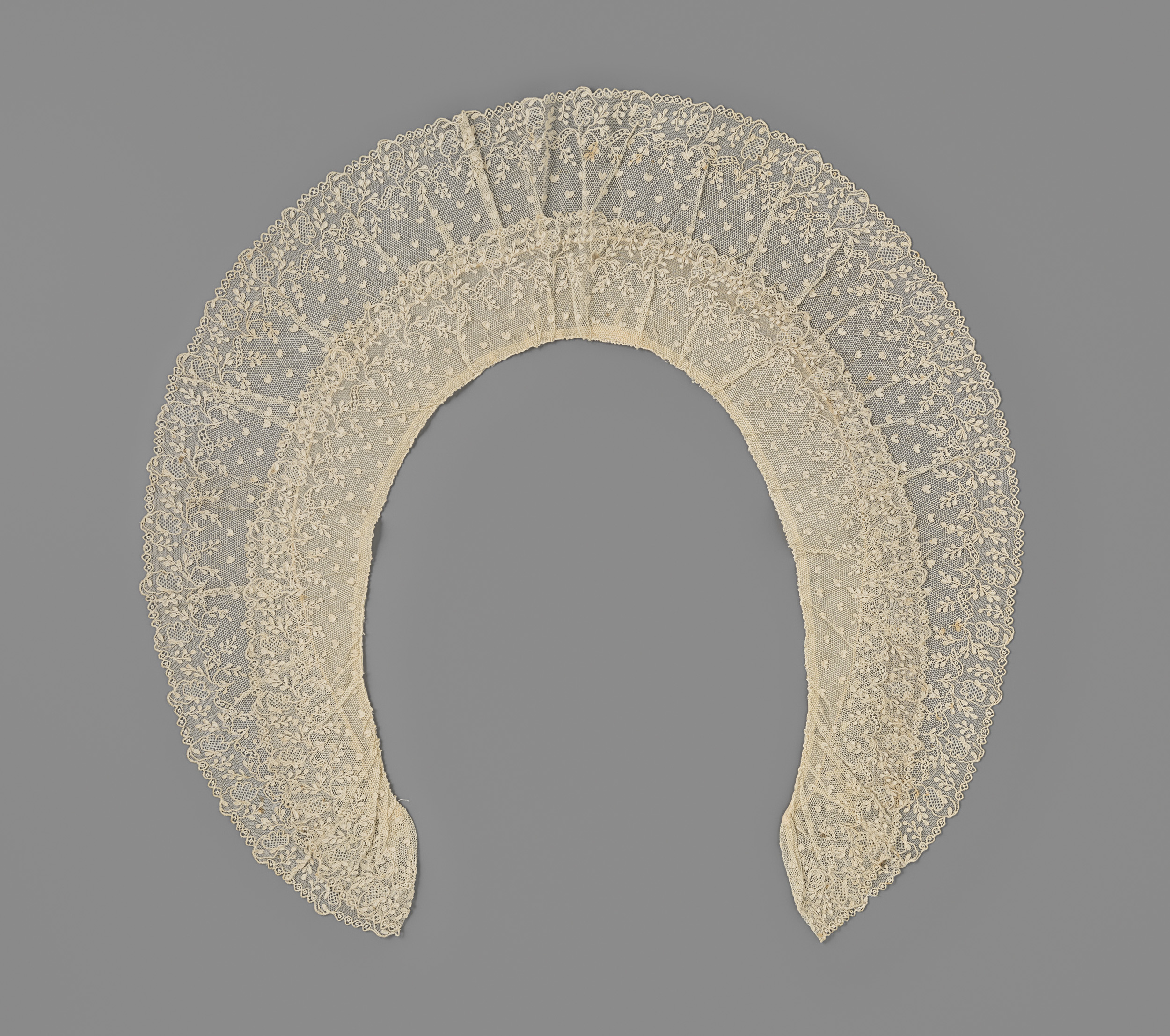
Beyond the prestige, inscription increases public knowledge of the complexity of the technique. And the challenges associated with learning their numerous skills. Technical, human, and cultural issues within various trades would be identified. And favourable conditions for the development of new viewpoints within a shared framework would be created as a result of this effort. Transparency and dialogue, while maintaining respect for the community that owns the trade, are essential not just for the preservation of the craft. But also for its growth. Without the potential to raise the number of holders while also receiving a diverse range of creative contributions, such a heritage will be unable to thrive in the long run.
How is it currently protected ?
The National Alençon Lace Workshop was established in 1976 with the aim of preserving the technique of Alençon lace production. Which was in danger of disappearing. The role of the lace-makers who work at the Workshop is to maintain, even to rediscover, and to transmit their knowledge. In order to do so, they reproduce designs, carry out research on forgotten techniques and use their skills in a modern context. By adapting the designs of contemporary artists. Important collections of needle lace have been created in the Fine Art and Lace Museum.
On behalf of its museum, the town of Alençon carries out an ongoing and established policy that deliberately aims at enriching the collection by acquiring different pieces representative of needle lace. These efforts have allowed the museum to begin inventorying and digitizing these reference materials to make it easier to study them from a historical, technical or stylistic perspective. This protection and conservation work complements the work done by the lace-makers themselves. Thereby strengthening the relationship between the National Alençon Lace Workshop and the municipal museum.

Conclusion
Alençon lace, also known as point d’Alençon, is a type of needle lace made in Alençon. Which is located in northwest France. When Louis XIV’s minister Jean-Baptiste Colbert invited Venetian lace-makers into the area in 1665 to teach the techniques of the grand but very expensive needle laces then being imported from Venice, the city of Alençon was already famous for its cut-work and reticella. Following the development of these imitations, a new kind of “national” Lace known as point de France emerged.
One of the two major types of Lace is needle lace. The design for needle lace is drawn on a piece of parchment or thick paper that is cloth-backed. An outline thread is stitched onto this to serve as a supporting framework, and the Lace is made with a needle and a single thread in a series of buttonhole stitches of varied tightness and in straight lines that support future stitches. The needle is never able to penetrate the backing. When the work is finished, a knife is used to cut the stitching thread between the two layers of backing. And the Lace is pulled off the pattern. The history of needle lace can be traced back to the late 15th century. The debate over whether it originated in Italy or Flanders has yet to be settled. But most agree that it was developed in Italy.
Resume
The Alençon technique, known as the point d’Alençon method, it is an extremely uncommon type of needle lacing that was once only used in the town of Alençon in the French region of Normandy, in the north-western part of the country. As “the Queen of Laces and a Lace Fit for Queens,” Alençon lace is the most intricate needle-point Lace ever created in France. She had its roots in 1665 when Louis XIV decided to increase the quality of French Lace to retain the large sums being spent on Italian and Flemish laces by members of his court in the nation where they belonged. The remarkable quality of Alençon lace has been recognized by UNESCO, which has added it to the “Representative List of the Cultural Heritage of Humanity” .
